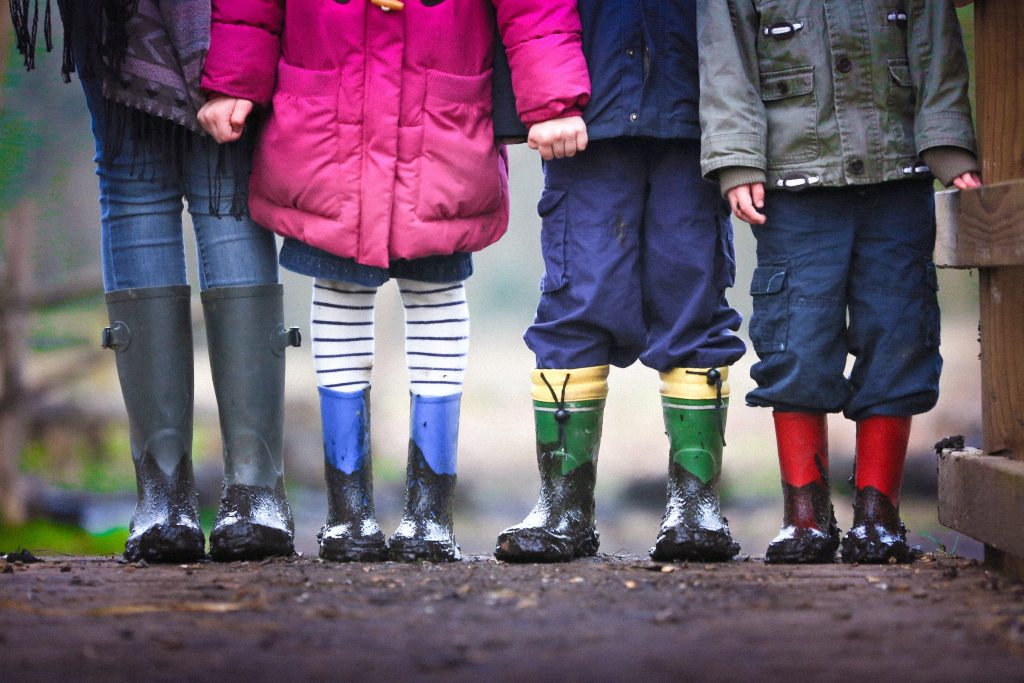
Suicide and self-harm are major public health concerns, with the median age of onset of self-harm estimated to be 13 years old (Gardner et al., 2019). Self-harm tends to be higher in girls, and research in community samples report prevalence rates in adolescents between 12.1% and 18.8% (Hawton et al., 2020).
At least half of all young people who die by suicide have previously self-harmed, making self-harm a major risk factor for suicidal thoughts and completed suicide (Hawton et al., 2020). Moreover, with the increase of young people accessing online platforms, there is a greater risk of being exposed to situations that negatively impact their mental health, such as unmoderated communities sharing material to promote self-harm (read more in Louise and Jo’s recent Mental Elf blog). Effective support for young people who experience self-harm or suicidal ideation is therefore essential.
However, there is limited research on the prevalence of suicidal ideation and self-harm in children aged 12 years and under, mostly because it is presumed to be low. But what if it isn’t? And what are the consequences of this? Geoffroy and colleagues (2022) sought to address this through conducting a systematic review and meta-analysis.

This is the first systematic review and meta-analysis to address suicidal ideation and self-harm in children aged 12 years and younger.
Methods
The researchers conducted a systematic literature search across 3 major databases. Studies were included if:
- Children were aged 12 years or under, in a community sample;
- Prevalence of suicidal ideation and self-harm were reported;
- The study was published in a peer-reviewed journal, in French or English;
- Reported original data.
Studies reporting prevalence from samples combining children and adolescents were only included if the mean age of the sample was less than 12 years.
The researchers identified 3,710 papers, which were initially screened by four authors based on titles and abstracts, and then screened at full text in pairs. Data was extracted into a form created for the study, with disagreements resolved through consultation with a fifth author.
Outcomes included suicidal ideation (including suicide planning) and self-harm behaviours (self-harm, non-suicidal self-injury [NSSI], and suicide attempts). A random effects model was used for the meta-analysis to calculate the prevalence of suicidal ideation and self-harm behaviours across the studies.
The researchers used the Joanna Briggs Institute Critical Appraisal tool to evaluate risk of bias in the included studies. Most papers scored between 4-6 out of a possible 9, indicating moderate risk of bias.
The authors assessed risk of publication bias through visually inspecting funnel plots, before using the Egger test and the Duval and Tweedie trim-and-fill method. Meta-regression and subgroup analyses were used to explore the heterogeneity within suicidal ideation.
Results
The researchers identified 28 papers of 30 studies on the prevalence of suicidal ideation and self-harm in samples of children aged 12 years and younger. Studies took place in North America, Asia, and Europe, with none being conducted in the UK or low-income countries.
The 30 studies included a total of 98,044 children aged 6-12 years, with sample sizes ranging from 30 to 40,359. The studies used a mixture of questionnaires and interviews to collect data, which involved either the child, parent, or both. In relation to outcomes, 28 (93%) studies reported suicidal ideation, 6 (20%) reported suicide attempts, 4 (13%) reported self-harm, and 2 (7%) reported NSSI.
Results from the meta-analysis found prevalence estimates of:
- 7.5% (95% CI 5.9 to 9.6) for suicidal ideation, based on 28 studies.
- 2.2% (95% CI 2.0 to 2.5) for suicide planning, based on 3 studies.
- 2.0% (95% CI 0.8 to 5.0) for self-harm behaviours, based on 11 studies.
- 1.3% (95% CI 1.0 to 1.9) for suicide attempts, based on 6 studies.
- 1.4% (95% CI 0.4 to 4.7) for self-harm, based on 4 studies.
- 21.9% (95% CI 6.2 to 54.5) for non-suicidal self-injury (NSSI), based on 2 studies (with high variation).
The prevalence estimate of suicidal ideation was slightly higher for boys (7.9%) than girls (6.4%). In contrast, self-harm behaviour prevalence estimates were similar in boys (3%) and girls (3.5%).
The prevalence of suicidal ideation was higher when children were interviewed without a parent (10.9%), and with a parent (10.4%), compared to parent report alone (4.7%).
The study reported high heterogeneity across prevalence estimates, which was not explained by study characteristics.

This review suggests that about 1 in 13 children younger than 12 years are thinking about the possibility of ending their own life.
Conclusions
This is the first systematic review and meta-analysis to investigate the prevalence of self-harm behaviours and suicidal ideation in community samples of children aged 12 years and younger.
The authors highlighted that the prevalence of suicidal ideation and self-harm behaviours in this population were greater than expected. There is a general belief that children rarely think about suicide because they do not understand or fathom their own death; however, this study shows that children aged 6-12 years can experience suicidal ideation at notable levels. These estimations were similar in boys and girls and the response rate was higher when the children were asked directly about their suicidal thoughts, rather than the parents.

This review is the first of its kind on the topic, with findings demonstrating that self-harm behaviours and suicidal ideation are present earlier in the life course and need to be addressed.
Strengths and limitations
Strengths
- The systematic review and meta-analysis methodology used in this review had clear search criteria aimed at suicidal ideation and self-harm.
- Researchers evaluated risk of bias using a validated tool, enhancing objectivity, whilst facilitating accurate interpretation of study findings.
- Researchers gave clear prevalence estimates across the included studies.
- The included studies comprised a large sample size and covered multiple countries.
Limitations
- Outcome measures varied greatly across the studies and may not have been operationalised in enough depth to sufficiently explore self-harm and suicidal ideation. Many studies only used a single item to determine suicidal ideation, making it a challenge to compare and synthesise the results across studies.
- Overall prevalence estimates were conducted within the last 12 months for most studies; however, the meta-analysis still included some studies that had shorter time frames such as 3 months, which impedes the precision of these estimates.
- Combining the estimated prevalence across the age span (ages 6-12 years) may not have been the most appropriate decision given developmental differences. However, this may have been necessary given that research on suicidal ideation and self-harm in this age range is scarce.
- The overall quality assessment of the included studies showed several studies were of low quality and used convenience sampling; these studies were not designed to estimate the prevalence of self-harm and suicidal ideation.
- The lack of studies from the UK may be due to the use of American English search terms. Age groups were referred to by “grades” rather than “years” and there was no mention of “key stages” or other terms relevant to a UK context.
- The review did not explore participant characteristics beyond age and gender. Individual level and area level characteristics could provide insight into protective and risk factors within this population, which is key to prevention.

Although the methodology of the review was rigorous, concerns regarding the search criteria, heterogeneity between studies, and the inclusion of studies not designed for prevalence estimates should be considered when interpreting results.
Implications for practice
This paper acts as a springboard to finally start exploring younger children’s experiences of self-harm and suicidal ideation. Prevalence rates in children increase as they go through puberty, peaking in adolescence, meaning that early intervention strategies among primary school-aged children could therefore help to reduce the likelihood of self-harm occurring in teenagers or later in adulthood. However, to get to this point, a lot more work needs to be done.
Although Geoffroy and colleagues didn’t touch on this, it is important for researchers to conduct qualitative work on self-harm and suicidal ideation in children to understand their perspectives and experiences. Most young people who self-harm will not access mental health services, making schools a vital target for intervention and prevention. Studies on school-based mental health interventions are increasing; however, studies on preventing suicide and self-harm in this population are limited, with gatekeepers receiving poor quality training (as highlighted in a previous blog by Rasanat).
Further, although schools, teachers, and parents often understand the importance of early identification and intervention for children at risk of self-harm or suicidal ideation, they can be hesitant to explicitly discuss this with the child due to fears of contagion and concerns of raising awareness versus promoting self-harm. And perhaps these concerns are valid – a recent blog by Lottie Shipp reporting on qualitative findings from Sweden found that young people felt at higher risk of experiencing poor mental health when surrounded by friends who were also struggling. However, evidence also shows that school-based interventions addressing self-harm do not show an increase in self-harm or adverse outcomes in students (Nawaz et al., 2023). Clearly, further research is needed to improve our understanding.
Overall, the current review demonstrates that self-harm and suicidal ideation are present in younger populations, and it is time to start discussing these issues with adapted support for the child and those responsible for their care. Failure to address this could have a life-long impact on vulnerable children, who may continue to suffer socially and economically without support (as blogged about last year by India).

Future studies should investigate the risk and protective factors associated with self-harm and suicidal ideation in younger populations, with a focus on early identification, prevention, and intervention.
Statement of interests
RFN receives funding from Fullscope, a consortium of organisations supporting the mental health and wellbeing of children and young people in Cambridgeshire and Peterborough. RFN is also funded by the Friends of Peterhouse scholarship, Peterhouse, University of Cambridge.
Links
Primary paper
Geoffroy, M. C., Bouchard, S., Per, M., Khoury, B., Chartrand, E., Renaud, J., … & Orri, M. (2022). Prevalence of suicidal ideation and self-harm behaviours in children aged 12 years and younger: a systematic review and meta-analysis. The Lancet Psychiatry, 9(9), 703-714.
Other references
Bellairs-Walsh, I. (2022). New research suggests that youth suicide attempts can result in later-life economic and social disadvantages. The Mental Elf.
Evans, R., Parker, R., Russell, A.E., Mathews, F., Ford, T., Hewitt, G., . . . & Janssens, A. (2019). Adolescent self-harm prevention and intervention in secondary schools: A survey of staff in England and Wales. Child and Adolescent Mental Health, 24, 230–238.
Gardner, W., Pajer, K., Cloutier, P., Zemek, R., Currie, L., Hatcher, S., … & Lima, I. (2019). Changing rates of self-harm and mental disorders by sex in youths presenting to Ontario emergency departments: repeated cross-sectional study. The Canadian Journal of Psychiatry, 64(11), 789-797.
Hawton, K., Bale, L., Brand, F., Townsend, E., Ness, J., Waters, K., . . . & Geulayov, G. (2020). Mortality in children and adolescents following presentation to hospital after non-fatal self-harm in the multicentre study of self-harm: A prospective observational cohort study. The Lancet Child and Adolescent Health, 4, 111–120.
La Sala, L., & Robinson, J. (2023). Online experiences: a risk factor for suicide? The Mental Elf.
Nawaz, R. F., Anderson, J. K., Colville, L., Fraser‐Andrews, C., & Ford, T. J. (2023). Interventions to prevent or manage self‐harm among students in educational settings–a systematic review. Child and Adolescent Mental Health.
Nawaz, R. F., & Cross, L. (2021). School-based mental health interventions: reducing depression, anxiety and aggressive behaviour. The Mental Elf.
NICE (2022). Self-harm: assessment, management and preventing recurrence. NICE guideline [NG225].
Shipp, L. (2023). Are mental health problems the “new normal” for young people? New qualitative study from Sweden explores their thoughts. The Mental Elf.
Photo credits
- Photo by Niranjan _ Photographs on Unsplash
- Photo by Ben Wicks on Unsplash
- Photo by Ravaly Rao on Unsplash
- Photo by Annie Spratt on Unsplash
- Photo by Michał Parzuchowski on Unsplash
- Photo by Rene Bernal on Unsplash
